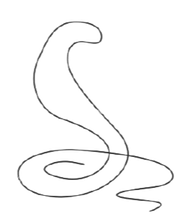3. Rattlesnake rumba!
My tail is like a rattle and I live in a pit!
Listen to a sample of the track
Fascinations
Contrary to popular belief, rattlesnakes do not want to bite you, and would much rather be left alone. That is why they shake their tails, to warn off predators and save them the effort of biting humans who unwittingly stumble across their pit! Be warned, rattlesnakes are venomous allowing them to paralyse their prey and swallow it whole. A rattle is one of those instruments, like the maracas or cabasa which makes a sound or vibration within itself so it just needs you to move it or shake it to make music.
Contrary to popular belief, rattlesnakes do not want to bite you, and would much rather be left alone. That is why they shake their tails, to warn off predators and save them the effort of biting humans who unwittingly stumble across their pit! Be warned, rattlesnakes are venomous allowing them to paralyse their prey and swallow it whole. A rattle is one of those instruments, like the maracas or cabasa which makes a sound or vibration within itself so it just needs you to move it or shake it to make music.
Musicking
This song has two strong, catchy melodies which have shared phrases in bars 2-3 and 7-11 and these help beginner-harmonizers feel more rhythmically secure. Sing the parts separately to help everybody learn the similarities and differences and repeat many times to build confidence; then divide your singers into two groups for the next two verses.
This song has two strong, catchy melodies which have shared phrases in bars 2-3 and 7-11 and these help beginner-harmonizers feel more rhythmically secure. Sing the parts separately to help everybody learn the similarities and differences and repeat many times to build confidence; then divide your singers into two groups for the next two verses.
Learning moves
The cabasa rhythm has two elements which may be tapped/clapped: 8 repeated quavers 12312312 or the tresillo where you emphasize the number ones (in bold). Who can tap the two rhythms in both hands at the same time? Learn each rhythm together then divide the group and take turns. When clapping is confident, explore using other shakers and woodblocks. This song needs a count-in, so why not play the cabasa rhythm until ready? As you sing, articulate the lyrics precisely, especially the passage of quavers in bars 1 and 6 and make the syncopated rhythms bright and snappy. Don’t be caught out by the quaver upbeats which start each verse in the vocal Part 1.
When gathering musicians in a circle, a useful warm-up/warm-down is to pass shakers around silently - no rattling!
The cabasa rhythm has two elements which may be tapped/clapped: 8 repeated quavers 12312312 or the tresillo where you emphasize the number ones (in bold). Who can tap the two rhythms in both hands at the same time? Learn each rhythm together then divide the group and take turns. When clapping is confident, explore using other shakers and woodblocks. This song needs a count-in, so why not play the cabasa rhythm until ready? As you sing, articulate the lyrics precisely, especially the passage of quavers in bars 1 and 6 and make the syncopated rhythms bright and snappy. Don’t be caught out by the quaver upbeats which start each verse in the vocal Part 1.
When gathering musicians in a circle, a useful warm-up/warm-down is to pass shakers around silently - no rattling!
